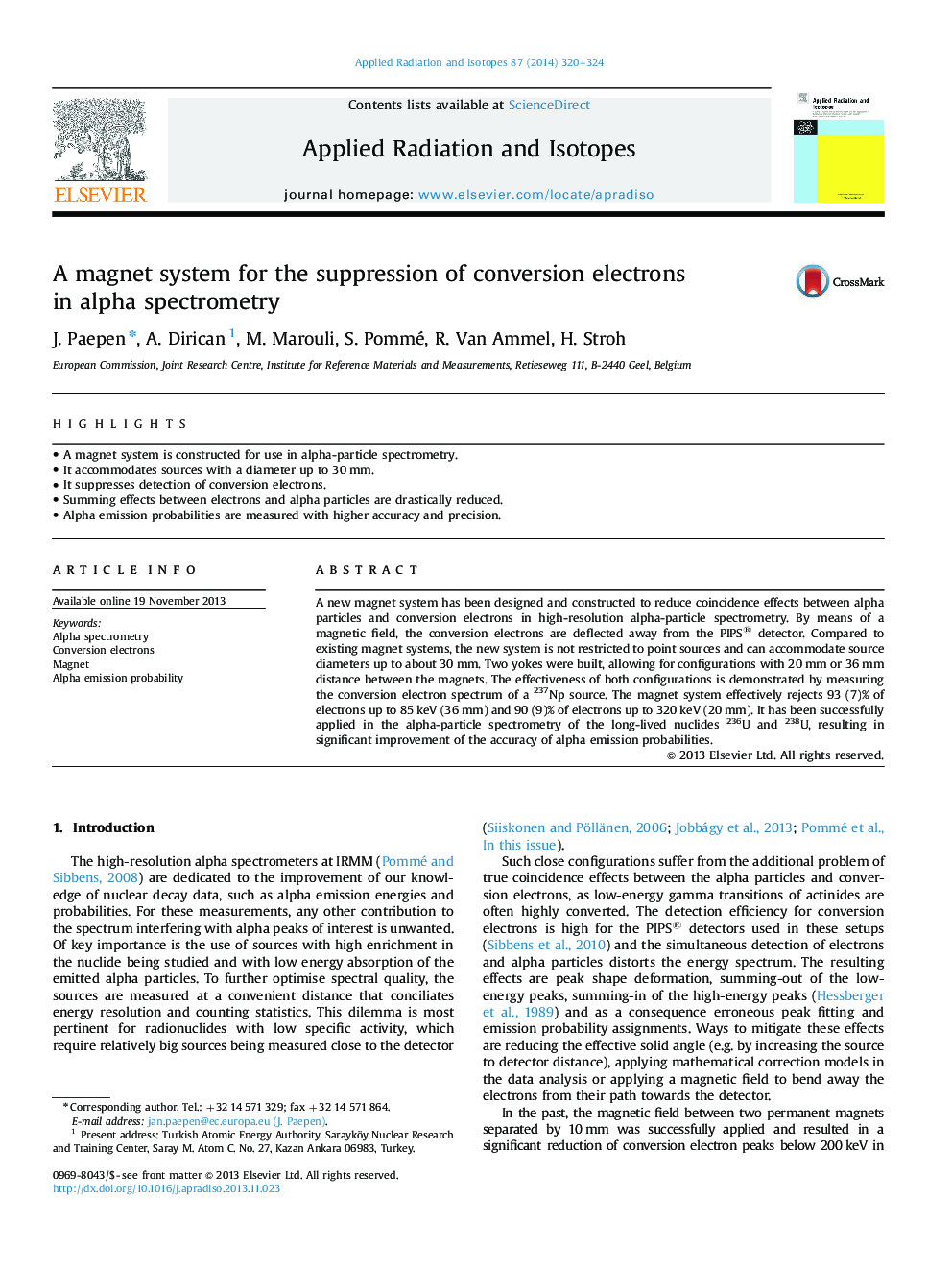| Article ID | Journal | Published Year | Pages | File Type |
|---|---|---|---|---|
| 1878676 | Applied Radiation and Isotopes | 2014 | 5 Pages |
•A magnet system is constructed for use in alpha-particle spectrometry.•It accommodates sources with a diameter up to 30 mm.•It suppresses detection of conversion electrons.•Summing effects between electrons and alpha particles are drastically reduced.•Alpha emission probabilities are measured with higher accuracy and precision.
A new magnet system has been designed and constructed to reduce coincidence effects between alpha particles and conversion electrons in high-resolution alpha-particle spectrometry. By means of a magnetic field, the conversion electrons are deflected away from the PIPS® detector. Compared to existing magnet systems, the new system is not restricted to point sources and can accommodate source diameters up to about 30 mm. Two yokes were built, allowing for configurations with 20 mm or 36 mm distance between the magnets. The effectiveness of both configurations is demonstrated by measuring the conversion electron spectrum of a 237Np source. The magnet system effectively rejects 93 (7)% of electrons up to 85 keV (36 mm) and 90 (9)% of electrons up to 320 keV (20 mm). It has been successfully applied in the alpha-particle spectrometry of the long-lived nuclides 236U and 238U, resulting in significant improvement of the accuracy of alpha emission probabilities.
